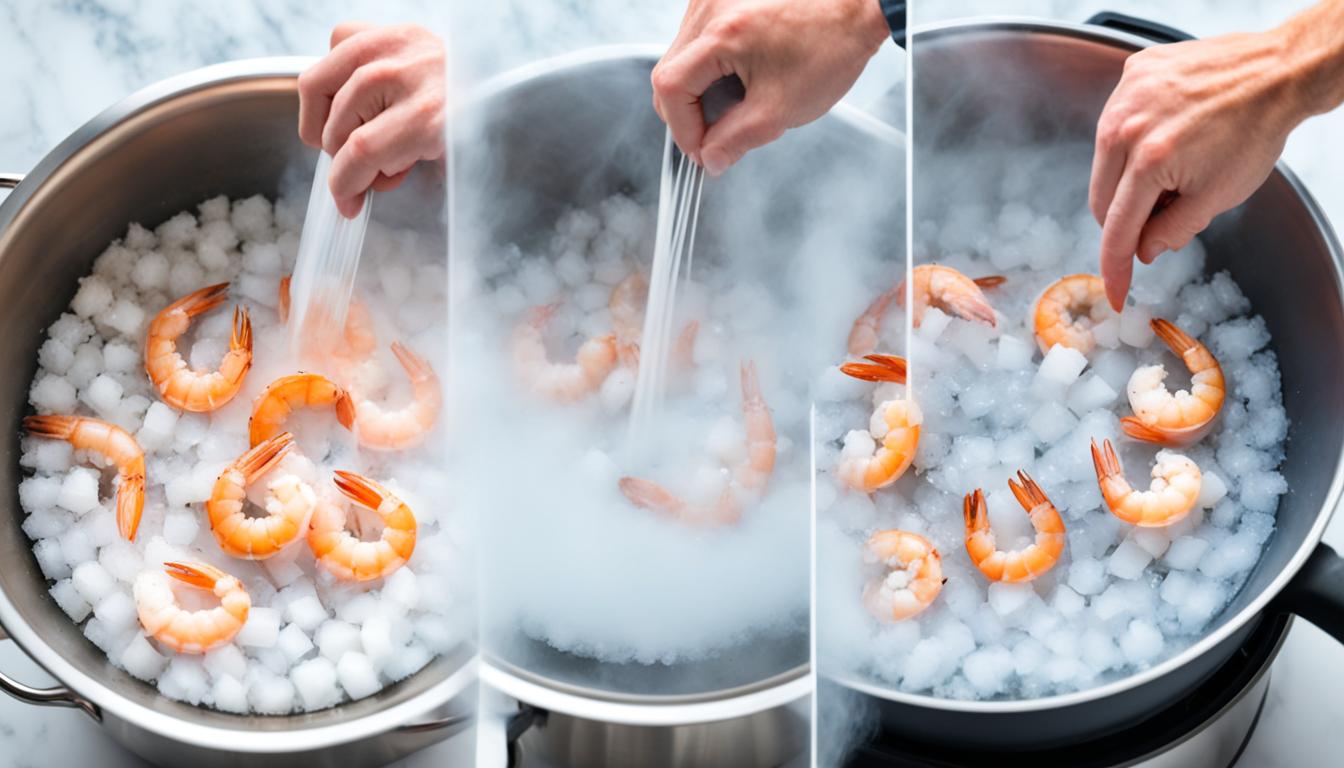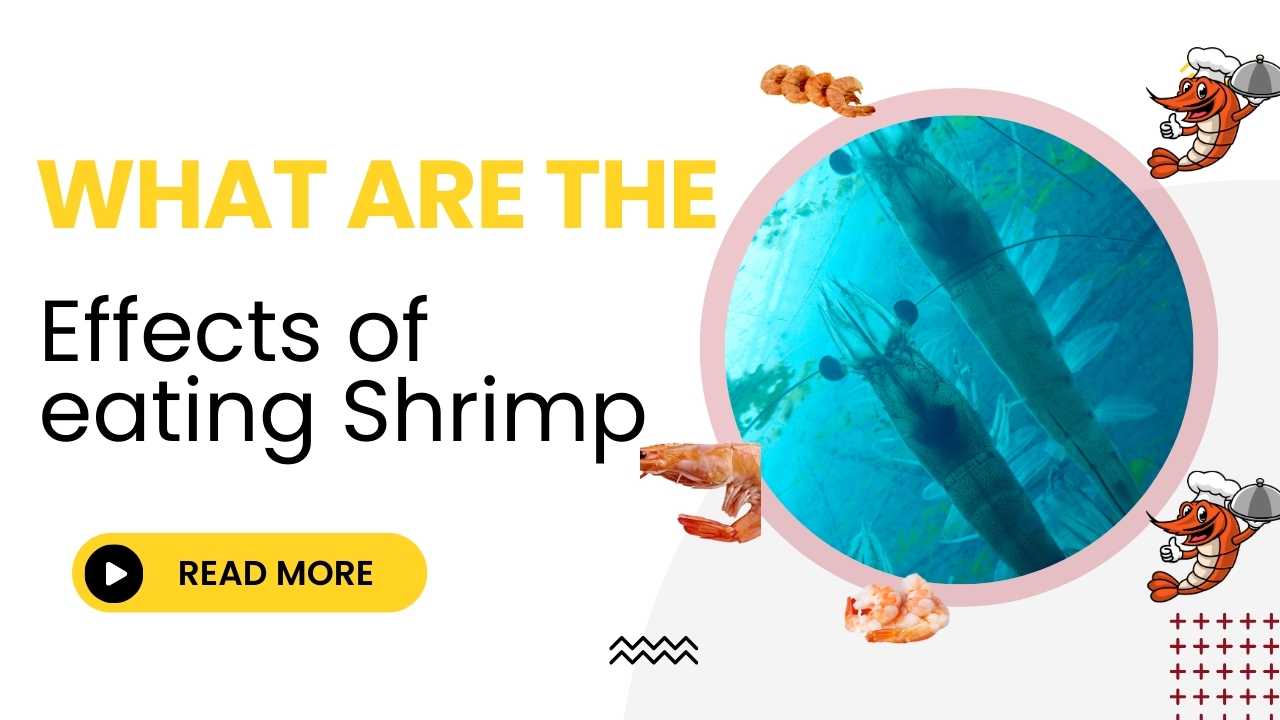Boiled shrimp is a beloved dish that combines succulent seafood with savory flavors. But getting the perfect texture and taste can sometimes be a challenge. Do you ever find yourself wondering if there’s a secret technique or recipe for achieving consistently perfect boiled shrimp? Well, you’re in luck! In this article, we will guide you through a quick and easy process to boil shrimp to perfection.
Whether you’re a seasoned cook or a beginner, our step-by-step instructions will help you master the art of shrimp boiling. We’ll cover everything from choosing the right shrimp to adding flavorful ingredients, ensuring that each step is crucial in achieving succulent and delicious results. Get ready to impress your family and friends with your perfectly boiled shrimp every time!
Key Takeaways:
- Follow our quick and easy guide to boil shrimp to perfection.
- Learn the best techniques for achieving the right texture and flavor.
- Discover important factors such as cooking time and water temperature.
- Get creative with seasoning options to enhance the taste of boiled shrimp.
- With practice, you can master the art of boiling shrimp and enjoy this seafood delicacy anytime.
Shrimp Boiling Techniques
When it comes to boiling shrimp, mastering the right techniques can make all the difference in achieving perfect results. In this section, we will guide you through the process, from preparation to seasoning, ensuring your shrimp are cooked just right and bursting with flavor.
Preparing the Shrimp
Before diving into the boiling process, it’s essential to properly prepare your shrimp. Start by selecting high-quality, fresh shrimp. Make sure to remove the shells and devein them, if desired. This step not only enhances the presentation but also ensures an even cooking process.
The Boiling Method
Now, let’s get into the essence of shrimp boiling. Fill a large pot with water and bring it to a rolling boil. To infuse your shrimp with maximum flavor, consider adding seasonings like Old Bay seasoning, lemon wedges, or garlic cloves to the water. These aromatic ingredients will elevate the taste profile, enhancing the natural sweetness of the shrimp.
Once the water is boiling and seasoned, carefully add the prepared shrimp. Be mindful not to overcrowd the pot, as this can result in uneven cooking. Allow the shrimp to cook for a few minutes, until they turn pink and opaque. Overcooking can lead to a rubbery texture, so keep a close eye on them and remove promptly when done.
Seasoning and Serving
After boiling, drain the shrimp and transfer them to a serving platter or ice bath to halt the cooking process. This helps to preserve the tenderness and prevents further cooking. Now comes the fun part – seasoning your boiled shrimp! You can keep it simple with a sprinkle of salt and pepper, or get creative with your favorite seasonings.
Popular options include Cajun seasoning, cocktail sauce, or a zesty remoulade. Whatever your preference, make sure to toss the shrimp gently in the seasoning to evenly coat each piece for maximum flavor impact.
With these techniques in mind, you’re on your way to mastering the art of shrimp boiling. Impress your guests with succulent, flavorful shrimp that will leave them craving for more.
Next, in Section 3, we will provide additional tips and tricks to help you achieve the perfect boiled shrimp every time. Stay tuned!
Tips for Perfect Boiled Shrimp
Achieving perfectly boiled shrimp requires attention to key factors such as cooking time, water temperature, and seasoning options. Follow these tips and tricks to elevate your shrimp boiling game and impress your family and friends with a delicious seafood dish.
Cooking Time
When boiling shrimp, it’s important to ensure they are cooked just right. Overcooking can result in tough and rubbery shrimp, while undercooking can leave them raw and unpleasant to eat. Follow these steps to determine the ideal cooking time:
- Bring a pot of generously salted water to a rolling boil.
- Add the shrimp and cook for 2-3 minutes, or until they turn pink and opaque.
- For larger shrimp, cook for an additional minute per size category.
- Remember, shrimp will continue to cook slightly even after they are removed from the water, so be cautious not to overcook.
Water Temperature
The best way to boil shrimp starts with the right water temperature. Follow these guidelines to ensure your shrimp cook evenly and retain their natural sweetness:
- Use cold or room temperature water to start boiling your shrimp.
- Adding shrimp to rapidly boiling water can cause them to cook unevenly and become tough.
- Bring the water to a gentle simmer before adding the shrimp, then maintain a low to medium heat throughout the cooking process.
Seasoning Options
Elevate the flavor of your boiled shrimp with these enticing seasoning options:
“One of my favorite ways to season boiled shrimp is with a mix of Old Bay seasoning, lemon juice, and a dash of hot sauce. The combination adds a delicious tang and subtle heat that enhances the natural sweet flavor of the shrimp.” – Chef Emily Smith
Alternatively, explore various seasoning blends or create your own signature mix by combining herbs, spices, and citrus flavors. Experiment with ingredients such as garlic, cayenne pepper, paprika, or fresh herbs like parsley and dill.
To add depth and complexity to your boiled shrimp, consider adding a few additional ingredients to the cooking water. Try including sliced lemon, bay leaves, or even a splash of white wine or beer for a unique flavor profile.
Shrimp Boiling Tips Summary
| Factor | Tips |
|---|---|
| Cooking Time | Boil for 2-3 minutes until pink and opaque. Adjust cooking time based on shrimp size. |
| Water Temperature | Start with cold or room temperature water. Bring to a gentle simmer before adding shrimp. |
| Seasoning Options | Experiment with various spices, herbs, citrus flavors, and additional ingredients in the cooking water for enhanced taste. |
With these tips in mind, you’re now equipped with the knowledge and techniques to achieve perfect boiled shrimp. Embrace your culinary skills and enjoy the satisfaction of creating a dish that will leave everyone craving for more.

Conclusion
In conclusion, boiling shrimp doesn’t have to be complicated. With our quick and easy guide, you now have the knowledge and techniques to make perfect boiled shrimp. From selecting the right shrimp to adding flavorful ingredients, each step is crucial in achieving succulent and delicious results.
Remember to follow the instructions closely, and don’t be afraid to get creative with your seasoning choices. Experiment with different spices and herbs to customize the flavor to your liking. Whether you prefer a classic Old Bay seasoning or a spicy Cajun blend, the possibilities are endless.
With practice, you’ll be able to master the art of boiling shrimp and enjoy this seafood delicacy anytime you want. Serve it as an appetizer with homemade cocktail sauce, add it to pasta dishes, or enjoy it on its own with melted butter. The versatility of boiled shrimp makes it a perfect addition to any meal.
FAQ
How long should I boil shrimp?
The cooking time for boiled shrimp depends on the size of the shrimp. Generally, small to medium-sized shrimp take 2-3 minutes to cook, while larger shrimp may take 4-5 minutes. Keep a close eye on the shrimp while boiling and remove them from the water as soon as they turn opaque and pink.
Should I devein shrimp before boiling?
It is recommended to devein shrimp before boiling, as the vein can sometimes contain grit and may affect the texture of the shrimp. To devein, use a small knife or shrimp deveiner to make a shallow cut along the back of the shrimp. Gently remove the dark vein with your fingers or rinse it out under cold water.
Can I add flavor to the boiling water?
Yes, adding flavor to the boiling water can enhance the taste of the shrimp. Some popular options include adding Old Bay seasoning, lemon slices, garlic cloves, or bay leaves to the water. Experiment with different ingredients to find your preferred flavor profile.
How do I know if the shrimp are cooked properly?
Properly cooked shrimp should turn opaque and pink in color. Overcooking can result in rubbery and tough shrimp, so it’s important to remove them from the boiling water as soon as they are cooked. You can also perform a simple test by cutting into the thickest part of a shrimp to ensure it is no longer translucent.
Can I use frozen shrimp for boiling?
Yes, you can use frozen shrimp for boiling. Thaw the shrimp before boiling by placing them in a bowl of cold water for about 10-15 minutes. Make sure they are fully thawed before adding them to the boiling water. Adjust the cooking time slightly, as frozen shrimp may require an extra minute or two to cook through.


